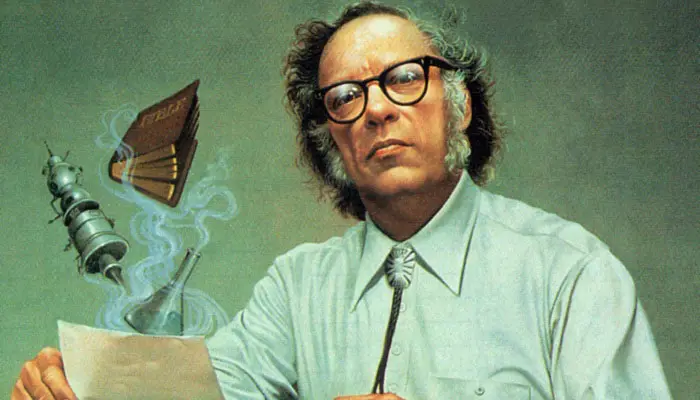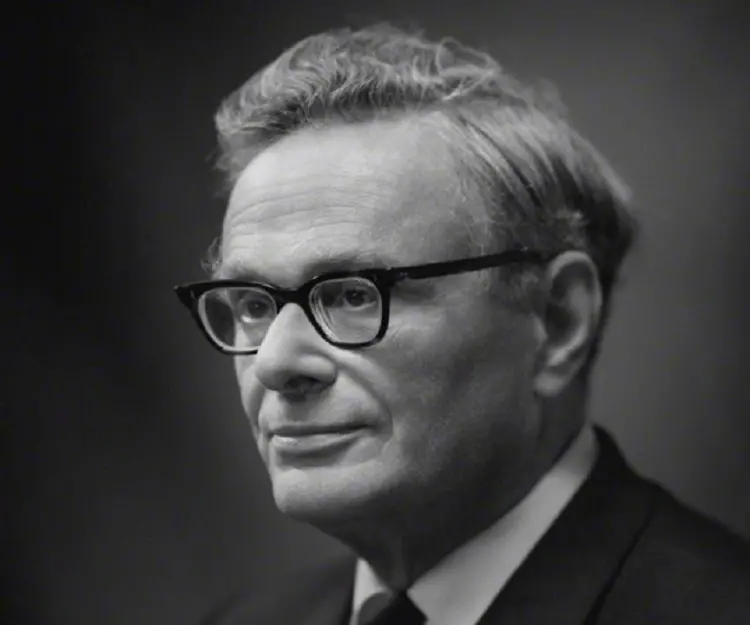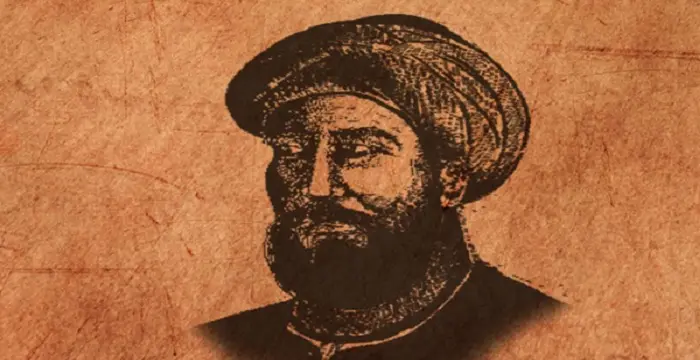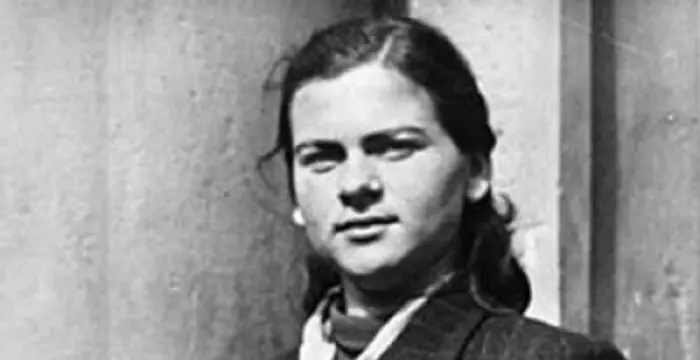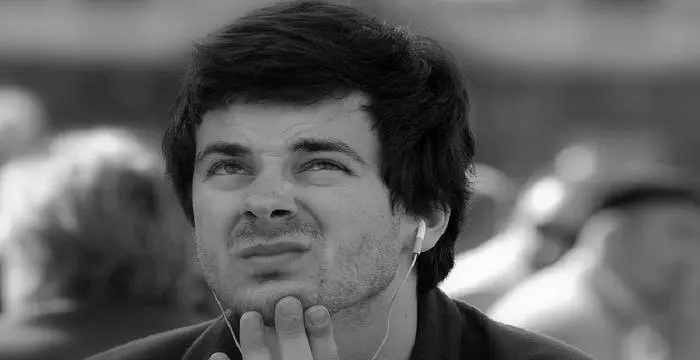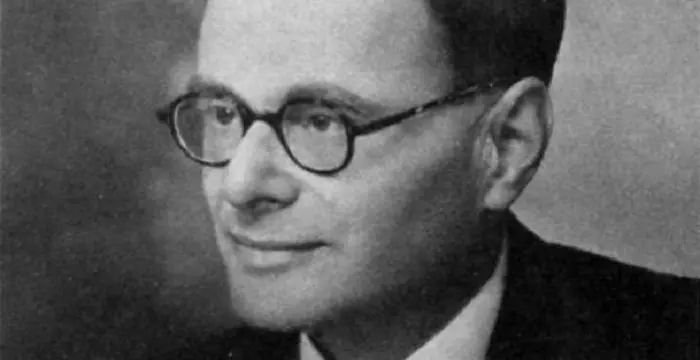
Hans Adolf Krebs - Physicians, Timeline and Facts
Hans Adolf Krebs's Personal Details
Hans Adolf Krebs was a German-British biochemist who was awarded the Nobel Prize in Physiology or Medicine in 1953
| Information | Detail |
|---|---|
| Birthday | August 25, 1900 |
| Died on | November 22, 1981 |
| Nationality | German |
| Famous | Physicians, Biochemists |
| Spouses | Margaret Cicely Fieldhouse (m. 1938) |
| Childrens | and Helen, John, Paul |
| Birth Place | Hildesheim, Germany |
| Gender | Male |
| Sun Sign | Virgo |
| Born in | Hildesheim, Germany |
| Famous as | Biochemist |
| Died at Age | 81 |
// Famous Biochemists
Robert Huber
Robert Huber is a German biochemist and Nobel Laureate. Check out this biography to know about his childhood, life, achievements, works & timeline.
Charles Best
Charles Best was a great scientist and a renowned physiologist who is remembered for being the co-discoverer of insulin. Read this biography to learn about his profile, childhood, life and timeline.
Isaac Asimov
Isaac Asimov was an American professor of biochemistry and a renowned author of science fiction and popular science books. Read this biography to know more about his life.
Hans Adolf Krebs's photo
Who is Hans Adolf Krebs?
Hans Adolf Krebs was a German-born British physician and biochemist who made significant contribution in the study of cellular respiration, a biochemical pathway in cells for production of energy. In his more than five decades of career, Krebs successfully discovered two important chemical reactions in the body, the urea cycle and the citric acid cycle. While for the first he collaborated with Henseleit, for the second he carried on his belief of detecting oxygen consumption and identifying chemical reaction in glucose metabolism using manometer. Together with Hans Kornberg, Krebs discovered the glyoxylate cycle, which was a slight variation of the citric acid cycle found in plants, bacteria, protists, and fungi. It was Fritz Lipmann’s discovery of acetyl CoA that helped specified the details of the crucial synthetic step in the cycle. As a result, the duo was bestowed with the Nobel Prize in Physiology or Medicine in 1953. Apart from scientific career, Krebs held important academic posts. He was appointed as Demonstrator in biochemistry at the University of Sheffield in 1934. In 1935, he was promoted to the post of Lecturer in Pharmacology. In 1938 when University of Sheffield opened a Department of Biochemistry, he served as its first Head, and eventually Professor in 1945.
// Famous Physicians
Al-Zahrawi
Al-Zahrawi, was an illustrious medieval Arab Muslim physician and surgeon. Check out this biography to know about his childhood, family life, achievements and interesting facts about him.
Jabir Ibn Hayyan
Jabir Ibn Hayyan was a medieval era polymath. Check out this biography to know about his life, works and achievements.
Maria Montessori
Maria Montessori was a physician and educator who developed the approach of Montessori education. This biography of Maria Montessori provides detailed information about her childhood, life, achievements, works & timeline.
Childhood & Early Life
Hans Adolf Krebs was born on August 25, 1900 to Georg and Alma Krebs in Hildesheim, Germany. His father was an ENT surgeon. Young Krebs was the second of the three children born to the couple.
As a child, Krebs was shy and introvert but at the same time, industrious and well-organized. He had a deep seated love for architecture and cultivated a liking for music, poetry, literature and art. He was a nature lover and pursued his hobby of botanical collecting. He practiced the piano as well.
Academically, Krebs gained his formal education from the famous old Gymnasium Andreanum. He was an above average student and did well in most subjects; history being his favourite subject.
When Krebs turned fifteen, he envisioned to follow his father’s footsteps and make a career as an ENT surgeon. He started reading books on medicine and planned to train under his father before he could independently practice.
With the outbreak of World War I, he was drafted in the Imperial German Army in September 1918. At the time, he was six months short of completing his secondary education. Within two months, the war ended and so did Krebs’ subscription.
In December 1918, Krebs pursued his passion and enrolled at the University of Göttingen to study medicine. Following year, he was transferred to the University of Freiburg. It was while at the university that Krebs became interested at research.
In 1920, Krebs first met Wilhelm von Mollendorf, a leader in the field of vital staining. Under Mollendorf, Krebs studied the staining effects of different dyes on muscle tissue. In 1923, he published his first technical paper on tissue staining technique.
By the time Krebs completed his medical course in 1923, he was convinced of pursuing a scientific career. Nevertheless, for making a living, he planned to enter internal medicine. In 1924, Krebs spent a year at the Third Medical Clinic at the University of Berlin to obtain a medical license.
While at the University of Berlin, Krebs combined clinical practice with experimental work. However, he soon realized the potential in himself as a powerful independent investigator and turned to take up medical research work in the field of chemistry. For the same, he studied at the Department of Chemistry at the Pathological Institute of the Charité Hospital, Berlin, in 1924. Following year he gained his M.D. degree from the University of Hamburg.
Career
In 1926, Krebs began his career as a research assistant to great biochemist Otto Heinrich Warburg at the Kaiser Wilhelm Institute for Biology in Dahlem, Berlin. It was while apprenticing with Warburg that Krebs learned about tissue slice and manometric methods to measure the rate of respiration and glycolysis of cancer cells.
Upon mastering the manometric tissue slice techniques, Krebs thought of applying it to study intermediary metabolism. He was aware that not much was known about the series of reactions between the foodstuffs that enter the body and their final decomposition products and believed that using the technique he could link the unbroken sequences of chemical equation and thus bring about a revolution in biochemistry. However, the idea did not appeal Warburg and Krebs side-lined it for future.
In 1930, Krebs completed four years of his association with Warburg. During the time, he came up with about 16 publications. With Warburg no longer requiring Krebs’s services, the latter took up a position in clinical medicine as an assistant in the Department of Medicine at the Municipal Hospital in Altona, lacking the conviction of investigating independently. Next year, he moved to the Medical Clinic of the University of Freiburg.
At Freiburg, Krebs followed both clinical and research career. He looked after 40 patients and at the same time, collaborated with a fellow research student Kurt Henseleit, to hypothesize the metabolic pathway for urea formation. The two carried out numerous experiments that only confirmed that amino acids and ammonia can produce urea in isolated liver slices and in no other animal tissues, as opposed to previous belief that amino acids and ammonia give rise to urea in the liver.
Krebs and Henseleit discovered the ornithine cycle of urea synthesis, which is often referred to as the Krebs-Henseleit cycle. They started working on the possible method for the synthesis of arginine. Using the Warburg manometer, they mixed a slice of liver with purified ornithine and citrulline. The result was citrulline acted as a catalyst in the metabolic reactions of urea from ammonia and carbon dioxide. In 1932, together with Henseleit, Krebs published the discovery thus establishing the ornithine cycle. It became the first metabolic cycle to be discovered.
In 1933, Krebs’ scientific progress met with a tragic halt. Hitler had assumed power and decreed the Law for the Restoration of the Professional Civil Service under which all non-Aryans and anti-Nazis were removed from professional occupations. Krebs was amongst the numerous Jews who were dismissed from academic posts.
Dismissed from job, Krebs received an offer from Sir Frederick Gowland to work with him at the Department of Biochemistry at the University of Cambridge. He received financial support from Rockfeller Foundation.
In 1934, Krebs was appointed as a Demonstrator in biochemistry. The following year, the University of Sheffield offered him a post of Lecturer in Pharmacology. He retained the post for 19 years.
In 1938, the University of Sheffield opened the Department of Biochemistry of which Krebs served as the first Head and eventually professor in 1945.
It was while at the University of Sheffield that Krebs collaborated with William Johnson. Together, the two investigated cellular respiration by which oxygen was consumed to produce energy from the breakdown of glucose. Using a manometer, they continuously conducted experiments and four months later, finally succeeded in establishing the sequence of the chemical cycle, which they called ‘citric acid cycle’.
In 1953, Hans Adolf Krebs was awarded with Nobel Prize in Physiology or Medicine "for his discovery of the citric acid cycle".
In 1957, Krebs collaborated with Hans Kornberg and found out that there were additional crucial enzymes. They added more details and discovered the glyoxylate cycle which was a modification of the citric acid cycle.
Scientific career apart, Krebs did well academically as well. In 1943, he took over the control over Sorby Research Institute. A year later, he was appointed Director of the newly established MRC Unit for Cell Metabolism Research at Sheffield. In 1954, he moved to the University of Oxford as Whitley Professor of Biochemistry. He held this post until his retirement in 1967. Post retirement, Krebs spent the last two decades of his career researching why organisms oxidized their foodstuffs through such a complex pathway. It was only in 1981 that Jack Baldwin answered his question by stating that acetic acid could not be directly dehydrogenated and required another molecule to complete oxidative decomposition.
Major Works
Krebs most important contribution in his scientific career came with the discovery of two important chemical reactions in the body, the urea cycle and the citric acid cycle. For the first, he collaborated with Henseleit and discovered the ornithine cycle of urea synthesis, which is often referred to as the Krebs-Henseleit cycle.
The highlight of his career came in 1937 when he discovered the citric acid cycle. It was a series of chemical reactions used by all aerobic organisms to generate energy through the oxidation of acetyl-CoA derived from carbohydrates, fats and proteins into carbon dioxide and chemical energy in the form of guanosine triphosphate (GTP). The discovery earned him Nobel Award in Physiology or Medicine in 1953.
Awards & Achievements
In 1953, Krebs received the prestigious Nobel Prize in Physiology or Medicine for his discovery of the citric acid cycle. He shared the prize with Fritz Lipmann. Same year, he received the Albert Lasker Award for Basic Medical Research.
In 1954, he was bestowed with the Royal Society’s Royal Medal.
In 1958, he received the Gold Medal of the Netherlands Society for Physics, Medical Science and Surgery. Same year, he was knighted.
In 1961, he received the Copley Medal
He was the Original Member of the Society for General Microbiology, which conferred him Honorary Membership in 1980.
Personal Life & Legacy
Hans Adolf Krebs married Margaret Cicely Fieldhouse on March 22, 1938. The couple was blessed with three children, two sons, Paul and John, and a daughter, Helen
Kerbs breathed his last on November 22, 1981 in Oxford, after suffering from a brief illness.
The University of Oxford named its building of the Department of Biochemistry, Hans Krebs Tower.
In 1988, the University of Sheffield started The Krebs Institute which is a research centre covering interdisciplinary programmes in biochemical research.
In 1990 the Federation of European Biochemical Societies instituted the Sir Hans Krebs Lecture and Medal. The award is given to researchers who have made outstanding achievements in biochemistry and molecular biology.
The Society of Friends of Hannover Medical School gives the Sir Hans Krebs Prize, which is worth 10,000 euros.
The Biochemical Society offers Krebs Memorial Scholarship to a postgraduate student working in biochemistry or an allied biomedical science at any British university.
// Famous German peoples
Jordan Carver
Jordan Carver is a famous German model. Let’s take a close look at her personal life, including her age, career, net worth, achievements and some fun facts.
Jürgen Klopp
Jürgen Klopp is a German football manager, and a former professional football player. Check out this biography to know more about his childhood, family, personal life, etc.
Irma Grese
Irma Grese was a notorious German Nazi concentration camp guard during the Second World War. This biography profiles her childhood, life, horrifying acts, death and other facts.
Hans Adolf Krebs's awards
| Year | Name | Award |
|---|---|---|
Other | ||
| 0 | 1953 - Nobel Prize in Physiology or Medicine | |
| 0 | 1961 - Copley Medal | |
| 0 | 1953 - Albert Lasker Award for Basic Medical Research | |
Hans Adolf Krebs biography timelines
- // 25th Aug 1900Hans Adolf Krebs was born on August 25, 1900 to Georg and Alma Krebs in Hildesheim, Germany. His father was an ENT surgeon. Young Krebs was the second of the three children born to the couple.
- // Sep 1918With the outbreak of World War I, he was drafted in the Imperial German Army in September 1918. At the time, he was six months short of completing his secondary education. Within two months, the war ended and so did Krebs’ subscription.
- // Dec 1918In December 1918, Krebs pursued his passion and enrolled at the University of Göttingen to study medicine. Following year, he was transferred to the University of Freiburg. It was while at the university that Krebs became interested at research.
- // 1920 To 1923In 1920, Krebs first met Wilhelm von Mollendorf, a leader in the field of vital staining. Under Mollendorf, Krebs studied the staining effects of different dyes on muscle tissue. In 1923, he published his first technical paper on tissue staining technique.
- // 1923 To 1924By the time Krebs completed his medical course in 1923, he was convinced of pursuing a scientific career. Nevertheless, for making a living, he planned to enter internal medicine. In 1924, Krebs spent a year at the Third Medical Clinic at the University of Berlin to obtain a medical license.
- // 1924While at the University of Berlin, Krebs combined clinical practice with experimental work. However, he soon realized the potential in himself as a powerful independent investigator and turned to take up medical research work in the field of chemistry. For the same, he studied at the Department of Chemistry at the Pathological Institute of the Charité Hospital, Berlin, in 1924. Following year he gained his M.D. degree from the University of Hamburg.
- // 1926In 1926, Krebs began his career as a research assistant to great biochemist Otto Heinrich Warburg at the Kaiser Wilhelm Institute for Biology in Dahlem, Berlin. It was while apprenticing with Warburg that Krebs learned about tissue slice and manometric methods to measure the rate of respiration and glycolysis of cancer cells.
- // 1930In 1930, Krebs completed four years of his association with Warburg. During the time, he came up with about 16 publications. With Warburg no longer requiring Krebs’s services, the latter took up a position in clinical medicine as an assistant in the Department of Medicine at the Municipal Hospital in Altona, lacking the conviction of investigating independently. Next year, he moved to the Medical Clinic of the University of Freiburg.
- // 1932Krebs and Henseleit discovered the ornithine cycle of urea synthesis, which is often referred to as the Krebs-Henseleit cycle. They started working on the possible method for the synthesis of arginine. Using the Warburg manometer, they mixed a slice of liver with purified ornithine and citrulline. The result was citrulline acted as a catalyst in the metabolic reactions of urea from ammonia and carbon dioxide. In 1932, together with Henseleit, Krebs published the discovery thus establishing the ornithine cycle. It became the first metabolic cycle to be discovered.
- // 1933In 1933, Krebs’ scientific progress met with a tragic halt. Hitler had assumed power and decreed the Law for the Restoration of the Professional Civil Service under which all non-Aryans and anti-Nazis were removed from professional occupations. Krebs was amongst the numerous Jews who were dismissed from academic posts.
- // 1934In 1934, Krebs was appointed as a Demonstrator in biochemistry. The following year, the University of Sheffield offered him a post of Lecturer in Pharmacology. He retained the post for 19 years.
- // 1937 To 1953The highlight of his career came in 1937 when he discovered the citric acid cycle. It was a series of chemical reactions used by all aerobic organisms to generate energy through the oxidation of acetyl-CoA derived from carbohydrates, fats and proteins into carbon dioxide and chemical energy in the form of guanosine triphosphate (GTP). The discovery earned him Nobel Award in Physiology or Medicine in 1953.
- // 1938 To 1945In 1938, the University of Sheffield opened the Department of Biochemistry of which Krebs served as the first Head and eventually professor in 1945.
- // 22nd Mar 1938Hans Adolf Krebs married Margaret Cicely Fieldhouse on March 22, 1938. The couple was blessed with three children, two sons, Paul and John, and a daughter, Helen
- // 1953In 1953, Hans Adolf Krebs was awarded with Nobel Prize in Physiology or Medicine "for his discovery of the citric acid cycle".
- // 1953In 1953, Krebs received the prestigious Nobel Prize in Physiology or Medicine for his discovery of the citric acid cycle. He shared the prize with Fritz Lipmann. Same year, he received the Albert Lasker Award for Basic Medical Research.
- // 1954In 1954, he was bestowed with the Royal Society’s Royal Medal.
- // 1957In 1957, Krebs collaborated with Hans Kornberg and found out that there were additional crucial enzymes. They added more details and discovered the glyoxylate cycle which was a modification of the citric acid cycle.
- // 1958In 1958, he received the Gold Medal of the Netherlands Society for Physics, Medical Science and Surgery. Same year, he was knighted.
- // 1961In 1961, he received the Copley Medal
- // 1980He was the Original Member of the Society for General Microbiology, which conferred him Honorary Membership in 1980.
- // 22nd Nov 1981Kerbs breathed his last on November 22, 1981 in Oxford, after suffering from a brief illness.
// Famous Virgo Celebrities peoples
Temple Grandin
Temple Grandin is a well-known American writer, autistic activist and animal expert. This biography profiles her childhood, life, achievements, career and timeline
Alex Holtti
Check out all that you wanted to know about Alex Holtti, the famous Danish Viner & YouTuber; his birthday, his family and personal life, his girlfriends, fun trivia facts and more.
Benjamin Atkinson
Benjamin Atkinson is the son of the world-renowned British actor and comedian, Rowan Atkinson. Check out this biography to know about his childhood, family, personal life, including his age, birthday, etc.
Jack Dylan Grazer
Jack Dylan Grazer is an American actor known mainly for his performance in the movie version of ‘Stephen King’s novel ‘It.’ Check out this biography to know about his childhood, family, personal life, birthday, etc.
Ted Williams
Ted Williams was an American baseball player. Read this biography to learn more about his profile, childhood, life and timeline.
Mia Diaz
All about American dancer and actor Mia Diaz, including her age, family life, birthday, boyfriends, net worth, and some fun facts.
Hans Adolf Krebs's FAQ
What is Hans Adolf Krebs birthday?
Hans Adolf Krebs was born at 1900-08-25
When was Hans Adolf Krebs died?
Hans Adolf Krebs was died at 1981-11-22
Where was Hans Adolf Krebs died?
Hans Adolf Krebs was died in Oxford, United Kingdom
Which age was Hans Adolf Krebs died?
Hans Adolf Krebs was died at age 81
Where is Hans Adolf Krebs's birth place?
Hans Adolf Krebs was born in Hildesheim, Germany
What is Hans Adolf Krebs nationalities?
Hans Adolf Krebs's nationalities is German
Who is Hans Adolf Krebs spouses?
Hans Adolf Krebs's spouses is Margaret Cicely Fieldhouse (m. 1938)
Who is Hans Adolf Krebs childrens?
Hans Adolf Krebs's childrens is and Helen, John, Paul
What is Hans Adolf Krebs's sun sign?
Hans Adolf Krebs is Virgo
How famous is Hans Adolf Krebs?
Hans Adolf Krebs is famouse as Biochemist


